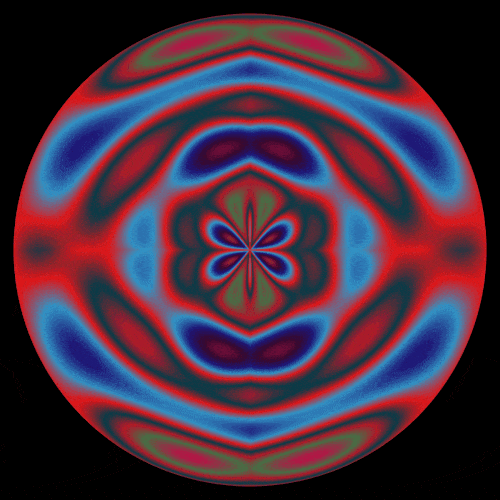
The Spherical Harmonics NFT collection at opensea.io is an artistic impression of the inside of pulsating stars. The study of these variable stars in the field of asteroseismology and makes use of data collected by NASA's space telescopes like Kepler and TESS.
But long before humans were able to send telescopes into space, collect NFTs on the Etherium blockchain, or even understood the concepts of the spherical harmonic functions, they had no idea that stars could show such behavior.
After Aristotle published his chief astronomical treatise 'On the Heavens' people believed stars to be eternally invariable. As such, they would neither change their size, color, or luminosity, but simply move around in space. The belief in eternally invariable stars stayed with humankind for a long time
Towards the end of the 16th century, however, astronomers keeping track of visible stars were baffled. All of sudden, Tycho's star appeared in the night sky in the year 1572 only to disappear again shortly after. In 1604, a similar situation happened when Kepler's star suddenly popped up the night sky, again only to disappear a few weeks later. And then, to further magnify the confusion, the star Mira has kept appearing and disappearing until today.
Today we know that stars are not eternally invariable. They are born in the collapse of molecular clouds, go through a full-fledged life cycle that includes many changes in size and appearance, before either starting their (almost) eternal journey as a white dwarf or dying as a supernova. Tycho's star and Kepler's star are such supernovae, two of only eight in history that were visible with the naked eye.
Mira, however, is a different story. It is a red giant star, meaning it has already burnt its entire reservoir of hydrogen in its core to helium. A process that is currently going in our sun. Due to stellar pulsations, Mira changes its brightness with a period of 332 days. The pulsation changes its magnitude from a maximum brightness of 3 down to a minimum brightness of 10. That is, during the maximum, Mira is about 100 times brighter than during the minimum.
Stars are balls of ionized gas in which immense forces are (mostly) in equilibrium. However, the equilibrium can be vibrationally unstable, meaning that a small displacement will lead to an oscillation around the equilibrium value. For specific eigenfunctions with specific eigenfrequencies, the amplitude of these oscillations grows in time, very similar to playing with a swing. If we keep pushing the swing in the correct moment, we drive the oscillation and the amplitude grows (or at least stays stable).
In three-dimensional stars, these eigenfunctions are the spherical harmonics coupled with a constant factor and a radial function. For different types of pulsating stars, it is perfectly normal to exhibit multiple such eigenfrequencies leading to a superposition of the different amplitudes. This is what the Spherical Harmonics NFT Collection shows. Each NFT shows off the combination of the changes of stellar variables in the structure of pulsating stars.
An eigenfunction of stellar pulsations is described by three values, the radial order, specifying the number of oscillation nodes between the stellar center and the atmosphere, and two values (mode degree and azimuthal order) specifying the spherical harmonic.
The Spherical Harmonics NFT collection will evolve in time. An initial drop of 40 NFTs (20 stills and 20 videos in two color styles) will be followed by regular drops on a weekly schedule. The NFTs will be created on OpenSea and will be listed at the same time.
The first drop prices will be between 0.05 and 0.1 ETH, but we have not made the final decision yet. The prices of future drops will vary as well. We will give an update as soon as we know it.